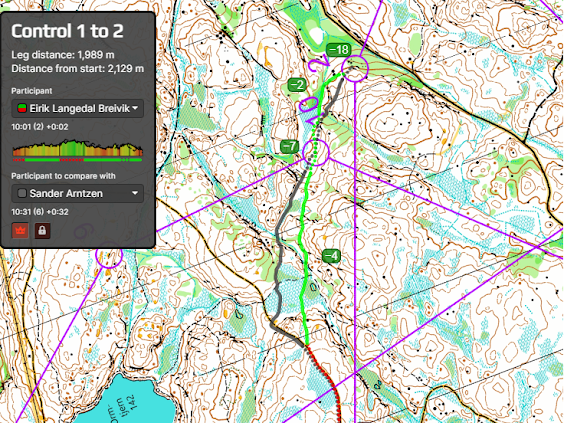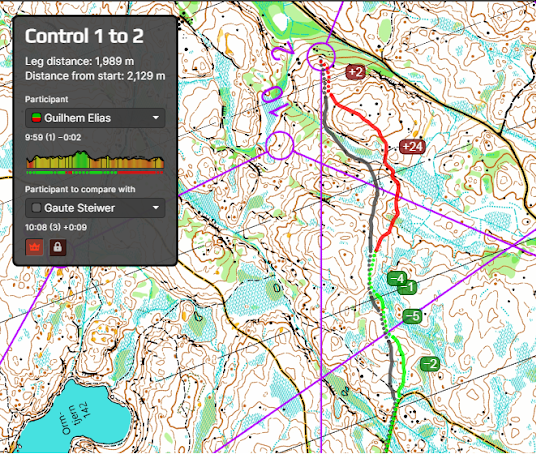Left, Right, or Straight: Leg Analysis #11
The pine forest in that area is rather open, and if there are no serious obstacles and no nearby roads or trails, you should try to run as close to the line as possible. In my weekly review (Livelox Pick of the Week; #4), I provided a link to the headcam video from this event.
The first part of the leg to the road fork runs roughly the same for all routes (near the crossing line).
Near the road fork, the routes divide into two main variations.
The left route offers several advantages: it involves no altitude gain and allows for a confident approach to the control point.
However, there are also some drawbacks. The runnability of the section along the slope and near the marsh is less predictable. Additionally, a decision must be made regarding how to navigate the seasonal marsh just after the road—whether to cross it directly or bypass it. This marsh can be quite wet in the spring.
It looks like the left route is shorter, but this is not. Both routes are about the same in length.
Right-hand route: Advantages: predictably good runnability, allowing for a confident approach from the top. There are no visible disadvantages.
The leg time of the best runners was approximately the same on these routes.
Guilhem Elias (1 st overall) - 9.59 - right route
Eirik Langedal Breivik (2nd overall) - 10.01 - left route.
However Guilhem Elias did his route not optimal in the part with flat hills. He could make it on about 25 second faster.
The main advantage of the right-hand route is its predictably easy run and reliable approach. With long-distance tactics in mind, it is important not to waste unnecessary energy at the very beginning of the course on 'fighting the woods', choosing routes where a good pace can be maintained without extra effort.
source: https://www.livelox.comIf you want to make fewer mistakes on courses, you might benefit from reading this book
"Confident Orienteering Book 1"
Aleksandr Alekseyonok, April 19, 2024






Comments
Post a Comment